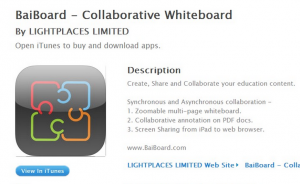I reached out for opinions from CS students on using the iPad for schoolwork. The consensus was that there wasn’t really a good way to accomplish most necessary tasks on the tablet, however there was some support for the Surface Pro, a fully functional Windows 8 tablet with a touch screen. I’m actually considering getting one instead of a new MacBook, although I’m not quite convinced about it. It seems like it might excel as a tablet but fall short as a laptop, more research is needed, especially on the keyboard.
There are many mobile and cloud based apps for writing code in different languages, but they typically lack the features and integration you’d want when creating full applications. Services that offer a cloud VM and browser-based IDE like Cloud9 and Koding are beginning to look promising, although they really need native iOS apps in my opinion to be viable on the iPad. Some apps can really be useful for learning the basics of a language, for example a new app Swifty can be used to learn the Apple language Swift on your iPad or iPhone.
In general I think if we’re pushing for iPads on campus there are 2 ways to lessen resistance against it:
- Frame the debate in terms of eReader vs. traditional books since it’s definitely a win for portability, cost, and flexibility.
- Move to a more optional BYOD model where iPads are offered as a rental, but the student can use their own device. Although I imagine the allure of standardizing on one device is that it’s easier to provide support.
